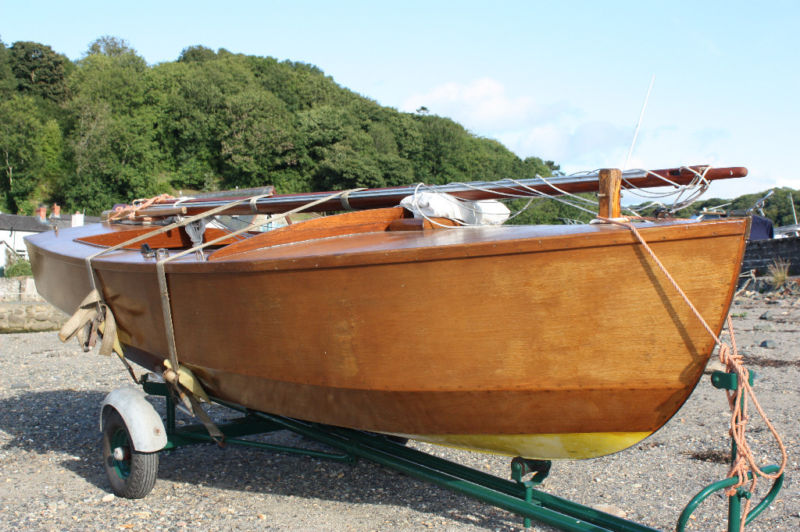Junior our 1950’s Yachting Monthly dinghy
Posted on

We have now removed 90% of the old varnish from the fore deck, side decks and stern area. This has had a treatment of MAS epoxies deep penetration epoxy plus one overcoat of MAS low Vis 2 to 1 epoxy using slow hardener.
I am often asked why we use MAS epoxies rather than the other brands that are available on the market. The main reason for me is the fact that MAS is not made from the same base materials of so many other brands. I have used all these other Brands and over time I have become sensitised to their products causing my skin to itch and flake and I get into quiet a state with them. However with MAS because of the unique chemistry I can get it on my skin work with it all day and have no effect on my health, except when I pull off dried epoxy from my skin I loose even more hair but its cheaper than going to the beauty parlour for a wax job.
The next is the ease of use, this to me is so important, because its 2 2 1 mix it is so easy to get a got mix of the hardener through the resin, next is the pot life and cure these are all in the users favour and prevent you running around like a headless chicken trying to get things done before the stuff sets off in the pot.
No blush or Wax. This has been the failure of so many projects over the years where people believe they have removed all the blushing or waxing only to find it has still come trough and prevented good adhesion of their finishing coat causing lift and peel. I can also use this at really low temperatures and get good results and because of the unique formula I can mix 3 and 5 litre buckets of the stuff and get it on without it going off in the pots, still allowing great penetration into the build materials.
Safety. I like the fact that although there is a heat production in the reaction of the resin and hardener it is not a violent reaction and unlike some of the other products that I have used, I have not had any horrible experiences of fire with MAS.
One of the frequent arguments I come across is that MAS is not Lloyds approved like other products. Now Lloyds approval is a great thing, but it is for one recipe only and you have to stick to that recipe rigidly, it can not change. So this means if the approval was obtained in the 60’s then the product has never changed and is now old fashioned it has not been improved as chemists have found improvements. MAS is always trying to improve their products ensuring that the customer always gets the most modern and beneficial improvements for their project. So to me lots of these certificates mean old fashioned never improved.
The transom was in a really bad condition and on first inspection I thought I would have to laminate another layer of ply onto it but I think with some gentle sanding and yes it did take along time we might have saved it and be able to keep it varnished in the final finish.
The centre plate going down the transom will be looked at later as the bottom edge has a little bit of softness in it and we will tackle this when we replace the bottom rubbing band
Junior has now been rolled over and each day I spend about 20 min removing the old screws from the hull and replacing them with poly nails and epoxied dowels
First the jack up to remove the old broken trailer
This is where the wheel sheered off when we tried to move it, thanks’ to our fork lift Eleanor we lifted everything off the trailer that the boat was delivered on in one hit.
Balanced on old drums
How junior will be for the remaining of the hull repairs.
There is some work to do on the centre line plank and the removal of the centre rubbing band, the continued and time consuming removal of all the screws, some faring before we look at sealing all joints and clothing the hull.
In between this we have decided to replace the rig with a junk rig designed by Allan Boswell who designed the rig for our schooners.
A very quick up date on the schooner in the shed.
Our 36 ft. schooner is slowly, very slowly coming on. We are almost finished putting the final coat on the hull.
Next steps will be to put on the water line and then prepare or dragging out of the shed turn over and pull back into the shed for deck and fit out. If I say it fast it seems easy.
